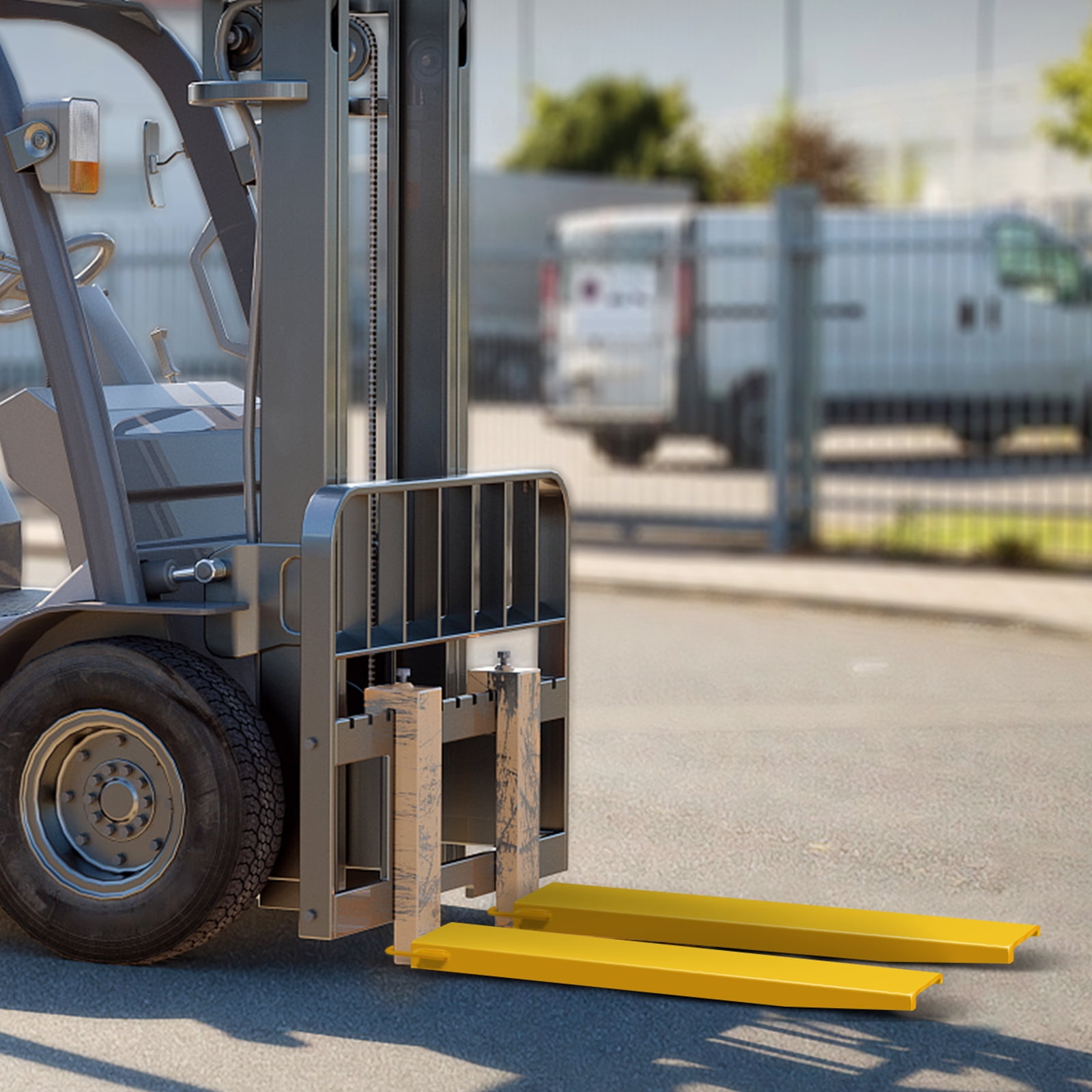Maximize Your Reach: The Power of Forklift Extensions for Heavy Lifts
Maximize Your Reach: The Power of Forklift Extensions for Heavy Lifts
Blog Article

In today's fast-paced industrial environment, efficiency and safety are paramount, especially when it comes to handling heavy loads. Forklift extensions are an essential tool that can greatly enhance the capabilities of a standard forklift. By providing the necessary reach and stability, these extensions allow operators to tackle larger, bulkier items that would otherwise be difficult to manage. With the right equipment, businesses can streamline their operations and improve productivity.
Utilizing fork lift extensions not only maximizes the potential of your existing machinery but also ensures that heavy lifting tasks are completed with greater precision. These extensions are designed to offer extra support and reach, enabling forklifts to handle significant loads with ease. As companies strive to increase their operational efficiency, understanding the advantages of fork lift extensions becomes crucial in making informed decisions about equipment and workflow enhancements.
Extended Forks For Forklift
Understanding Forklift Extensions
Forklift extensions are specialized attachments designed to enhance the lifting capabilities of standard forklifts. These extensions provide additional length to the forklift's forks, allowing operators to handle larger and heavier loads that would otherwise be difficult or impossible to move with the standard fork size. By increasing the reach and capacity of the forklift, these extensions can significantly improve productivity in various industrial settings.
There are various types of forklift extensions available, each tailored to specific applications. Some extensions are fixed, while others are adjustable, catering to different load sizes and shapes. It is important for operators to select the right type of extension for their specific needs, taking into consideration the weight distribution, load complexity, and the capabilities of the forklift itself. Proper use of extensions can lead to safer operations and reduce the risk of accidents.
To maximize the effectiveness of forklift extensions, operators must adhere to safety guidelines and best practices. This includes properly securing the extensions to the forklift, ensuring they are rated for the weight to be lifted, and regularly inspecting both the extensions and the forklift for any signs of wear or damage. By understanding and implementing these principles, businesses can leverage the full potential of forklift extensions, streamlining their operations and enhancing overall efficiency in material handling.
Benefits of Using Forklift Extensions
One of the primary advantages of using forklift extensions is the enhanced lifting capacity. These extensions allow forklifts to handle heavier and larger loads than they typically could manage with their standard forks. By increasing the length of the forks, operators can easily transport bulky items such as pallets or construction materials without risking damage to the goods or the equipment. This capability significantly boosts efficiency in settings where heavy lifting is a routine task.
Another notable benefit is improved stability during lifting operations. Forklift extensions are designed to distribute weight evenly, which helps in maintaining balance while carrying oversized loads. This increased stability reduces the risk of tipping over or losing control of the load, ensuring safety for both the operator and the surrounding personnel. Such assurance is crucial in high-traffic environments like warehouses and construction sites, where accidents can lead to costly delays and injuries.
Additionally, forklift extensions can be a cost-effective solution for businesses needing to adapt their operations for specific tasks without investing in new equipment. Instead of purchasing a larger forklift, extensions provide a practical way to extend the capabilities of existing machinery. This flexibility allows companies to respond to varying demands while minimizing capital expenditure, making operations more scalable and efficient.
Types of Forklift Extensions
There are several types of forklift extensions designed to enhance the capabilities of standard forklifts. One common type is the boom extension, which allows forklifts to reach greater heights and access hard-to-reach areas. This type of extension is particularly useful in construction and warehousing applications where loading and unloading materials from elevated positions is necessary.
Another popular type is the fork extension, which simply lengthens the existing forklift forks. These extensions provide the ability to handle wider and longer loads that the standard forks may not accommodate. Businesses often utilize fork extensions when transporting oversized pallets or equipment, ensuring a safer and more efficient lifting process.
Lastly, there are specialized extensions like the carpet pole or drum handler extensions. These are designed for specific applications and improve efficiency for distinct types of loads. Carpet poles, for example, are tailored for transporting rolls of carpet, while drum handlers are made for safely lifting large drums. These specialized extensions help businesses maximize their reach and enhance their operational capabilities.
Safety Tips for Using Extensions
Using fork lift extensions can greatly enhance your lifting capabilities, but it is crucial to prioritize safety when doing so. Always ensure that the extensions are compatible with your specific forklift model. Before attaching the extensions, inspect them for any signs of wear or damage. This includes checking for cracks or bends that could compromise their integrity during use. Proper maintenance and regular inspections can help prevent accidents and ensure the equipment performs effectively.
When operating a forklift with extensions, it is important to consider the load's center of gravity. Distributing the weight evenly and staying within the manufacturer's load capacity is essential to maintain stability. Operators should also be mindful of their surroundings while lifting, ensuring there is ample clearance and no obstructions that could lead to collisions or tip-overs. Using extensions can change the dynamics of the lift, so always proceed with caution.
Lastly, train all operators on the proper use of fork lift extensions. They should understand how to calculate load limits, operate with extensions correctly, and know the potential risks involved. Regular training sessions can reinforce safe practices and encourage a culture of safety in your team. By adhering to these guidelines, you can maximize the benefits of fork lift extensions while minimizing the risks associated with heavy lifts.
Report this page